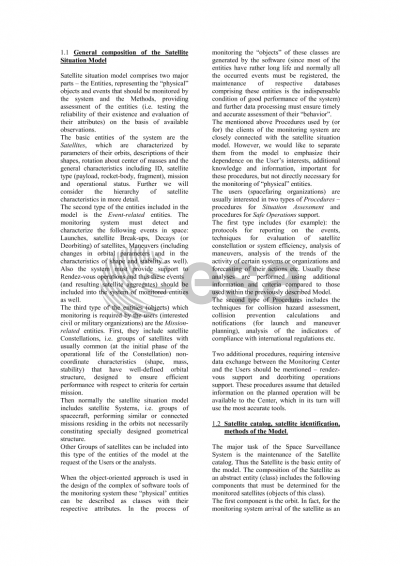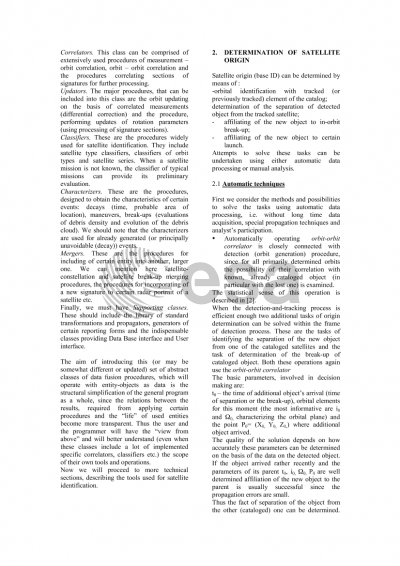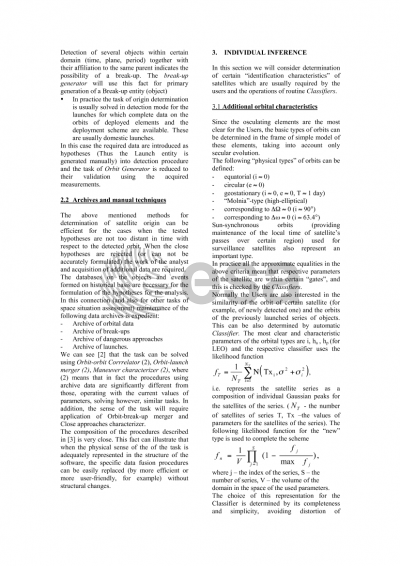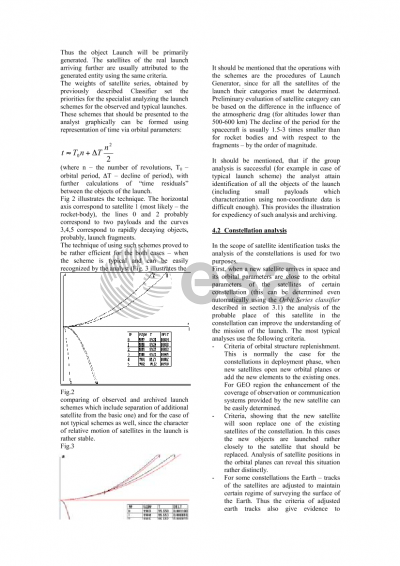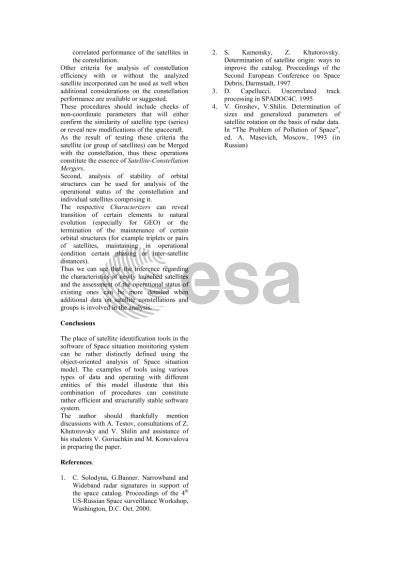Document details

Abstract
Satellite identification procedures are based on joint analysis of orbital and non-coordinate data available in the Data Processing Center. The work presents the system of software tools used for this analysis. The first section of the paper presents general composition of the model of the space situation used by the Data Processing Center, indicating and describing the basic entities, objects, classes, attributes and techniques (with the required databases and archives) used for statistical and logical inference. The place of satellite identification tasks in this system is outlined. Then a set of classifiers, used for statistical inference on satellite type (spacecraft, rocket-body, fragment; specific type (series) of a spacecraft or rocket-body) is described. These classifiers use orbital and non-orbital (estimations of sizes, rotation, ballistic characteristics) data and evaluation of the evolution of these parameters if needed. However, the actual satellite identification techniques normally involve the data on all the objects of the launch (for analysis of new satellites) and consider the structure of satellite groups and constellations - regarding the place of the analyzed satellites in them and their evolution. The examples of enhanced efficiency of the system compared to the simple cluster-based analysis are presented as well as the illustrations of the structural advantages and "richer" inference capabilities.
Preview

